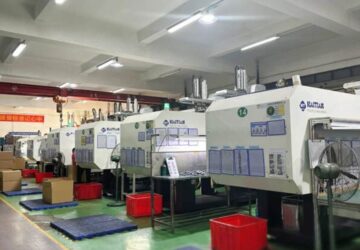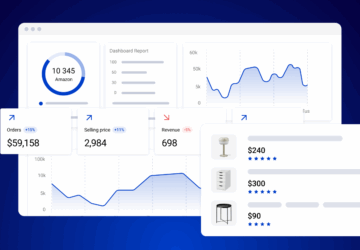If you’re thinking about outsourcing your injection molding project to China, you’re not alone. Many businesses do so to reduce costs and speed up delivery. But along with the benefits, you’ve likely heard the warnings—short mold lifespan, inconsistent part quality, or missed deadlines.
These issues aren’t inevitable. They’re usually the result of poor supplier evaluation or skipped quality steps. In this guide, you’ll learn how to assess Chinese injection molding factories, avoid common traps, and build a workflow that gives you both cost savings and dependable results, from factory screening to sample validation.
Understanding the Real Meaning Behind “Lower Cost”
If you’re exploring injection molding in China, price is a major factor. It’s true—Chinese mold makers often quote significantly less than their Western counterparts. Lower labor costs, access to local raw materials, and mature supply chains in regions like Dongguan or Zhejiang help drive prices down.
But here’s what you need to be cautious about: not all “low cost” offers the same value.
Sometimes, the savings come from cutting corners—like using uncertified or untreated mold steel that wears out quickly, skipping heat treatment, or omitting important processes like dimensional validation or trial shots. Some quotes may even leave out essential services like mold flow analysis or packaging, which will show up later as hidden costs.
So what should you do?
- Ask for a full breakdown: Request a line-by-line quote that separates mold design, steel material, tooling, surface finish, and shipping.
- Verify the steel grade: P20, H13, or S136 are standard; be wary of vague labels like “local equivalent.”
- Check what’s not included: Does the price cover DFM, T1 sampling, or rework? What happens if the mold needs adjustments after the first trial?
Low cost should never come at the price of low reliability. A transparent quote is your first filter to separate trustworthy partners from risky ones.
Identify the Right Type of Injection Molding Supplier
Not every injection molding factory in China is built the same, and choosing the wrong type can derail your project from day one. You need to align your project scope with the right supplier tier.
- For high-end or regulated parts (aerospace, automotive, medical), look for ISO 9001, IATF 16949, or ISO 13485 certifications. These factories have experience with export-grade molds, tighter tolerances, and documentation requirements.
- For low to mid-volume runs or prototyping, smaller shops may offer better flexibility and faster communication. Many are highly skilled in custom molds and support faster iteration.
Also, decide if you need tooling only or tooling plus molding. A one-stop partner helps minimize risk, but tooling-only shops might be ideal if you’re molding in-house or elsewhere.
To evaluate fit, ask for:
- Sample case studies or videos of recent projects.
- A client list, especially overseas customers.
- Factory tour videos (especially if you can’t visit in person).
The more visibility you get upfront, the fewer surprises you’ll face later.
Verify Certifications and Quality Control Capabilities
In precision manufacturing, certifications are more than just paperwork—they signal whether a factory can consistently meet your standards. At minimum, make sure the supplier is ISO 9001 certified. For automotive parts, look for IATF 16949. If your components involve flame retardancy or material safety, UL, REACH, or RoHS compliance is essential.
But certificates alone aren’t enough. Ask about their quality control procedures:
- Do they have documented IQC, IPQC, and FQC processes?
- Is there a CMM (Coordinate Measuring Machine) or vision inspection system in-house?
- Can they trace materials with steel certificates or resin batch reports?
Before production starts, you should also receive a full inspection report for T1 samples. A factory that can’t show how they control quality—or offers vague answers—isn’t ready for critical applications.
When quality failure means scrapping a mold or delaying your launch, it’s worth taking time to verify these systems early.
Assess Engineering Support with DFM and Simulation Tools
A capable injection molding supplier doesn’t just take your drawings and machine the tool blindly. They engage early with engineering insight. One of the first things to request is a Design for Manufacturability (DFM) report. This should review critical aspects such as draft angles, wall thickness uniformity, potential shrinkage, and undercuts. If your supplier doesn’t bring these issues up, you’ll likely pay for them later in the form of rework or part failures.
In addition to DFM, mold flow analysis is a strong indicator of technical strength. It simulates how resin fills the cavity, highlights weld lines, and helps optimize gate placement and cooling. Ask whether they provide this analysis during the quoting phase and whether it’s included or charged separately.
Strong suppliers treat these tools as standard, not optional extras. In one case we saw, early DFM feedback saved a client from designing unnecessary side-actions, cutting mold costs by 20%.
These insights aren’t just technical—they directly impact your lead time, quality, and budget.
Use T1 Sampling to Catch Issues Before Full Production
Your first molded sample—commonly called the T1—is more than just a checkpoint. It’s your first opportunity to verify that the mold and process deliver what your drawing demands. If your supplier skips or downplays this stage, it’s a red flag.
Make sure your quote includes T1 sampling. It should come with:
- A dimensional inspection report (ideally from CMM or 3D scanning)
- Documentation of ejection, parting line, and packaging condition
- Confirmation of the material used and process parameters
The T1 also helps you evaluate whether cooling, gating, and venting work as expected. If issues arise, clarify up front how many revision cycles are included and who’s responsible for correction costs.
A professional supplier uses T1 feedback to fine-tune the mold, not just as a box-ticking step. You should have the option to request a second sample after adjustments, especially for tight-tolerance or critical parts.
Handled well, T1 saves you from costly surprises down the line.
Bridge the Time Gap with Clear Communication
When you’re sourcing injection molding in China, you’re often working with a 12-hour time difference. That delay can make or break your project schedule if communication isn’t well managed.
From the start, assess how your supplier handles inquiries. Do they respond within one working day? Do they ask clarifying questions instead of simply replying “noted”? These early signs often reflect how they’ll perform during production.
It also helps if they have bilingual project managers who can communicate both technical and logistical details clearly.
For smoother coordination, request:
- A dedicated point of contact for the entire project
- Weekly updates with progress photos or timeline checkpoints
- Emergency escalation procedures if timelines shift
Reliable mold partners treat communication like a deliverable, not an afterthought. In cross-border manufacturing, clarity and responsiveness are key to staying on track.
Build Long-Term Relationships, Not Just One-Time Orders
If you’re treating your China-based molding supplier as a one-time transaction, you’re likely missing out. Many of the top injection molding companies in China prioritize long-term partnerships. They are more willing to invest in process improvements, dedicate resources, and prioritize delivery for clients who show long-term potential.
Start with a trial order. This lets you assess technical capabilities, communication style, and responsiveness without major risk. If things go well, scale up gradually.
To maintain a strong relationship:
- Give timely, constructive feedback when issues arise
- Acknowledge improvements in quality, lead time, or pricing
- Keep communication steady, even between orders
Suppliers value consistent business. In return, you’re more likely to receive better pricing, faster support, and greater flexibility when things don’t go exactly to plan.
Final Thoughts: Get It Right from the Start
Choosing a partner for injection molding in China isn’t just about cutting costs—it’s about working with a factory that values transparency, technical accuracy, and open communication. With the right partner, you can benefit from cost-effective tooling, efficient production, and reliable delivery.
Start with a well-documented quote, validate capabilities through samples, and pay close attention to how they communicate. Most importantly, choose a mold factory with export experience and a structured process for trial runs.
When you approach your project strategically, injection molding in China can be not just affordable, but surprisingly dependable.







